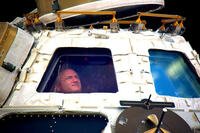ORLANDO -- Critics should look at recent problems with the Air Force's newest AC-130J gunship as routine and not let them dictate how Air Force Special Operations Command intends to innovate and be combat ready in the future, the command's top general said Thursday.
"This is normal stuff that happens in test," Lt. Gen. Brad Webb, AFSOC commander, told reporters during a roundtable interview here at the Air Force Association's Air Warfare Symposium.
"The specifics of it is, even though it's a C-130, we took the 30mm gun from a 'Whiskey' model AC-130," he said.
At first, everything checked out. But "we had some challenges that software can overcome," Webb said.
Related content:
- The Air Force's 'Ultimate Battle Plane' Has A Major Gun Problem
- Air Force's Newest Gunship, AC-130J Ghostrider, Is Almost Ready for Combat
- Air Force Wants a Laser Weapon on AC-130J Gunship
"Do we have software issues we need to address? Sure, but the testing continues forward," he said, adding that news surrounding the snafu has been largely overblown.
AFSOC's newest gunship model, the AC-130J Ghostrider, was declared initial operating capability ready in September.
Last month, however, the Pentagon's Office of the Director of Operational Test and Evaluation said fire control systems associated with the plane's 30mm GAU-23/A cannon had issues, including getting knocked out of alignment when fired and needing to be recentered repeatedly by an operator.
The AC-130W Stinger II and J models are the only variants of the gunship to use the Orbital ATK-made cannon. The fourth-generation J is slated to replace the AC-130H/U/W models, with delivery of the final J model sometime in 2021, according to the Air Force.
"I'm very confident in the software fixes we have in place now, and it was never that the 30mm couldn't fire … software patches can easily resolve" this issue, Webb said. "This is a solid program."
Officials also want to incorporate high-energy lasers on the AC-130J to make it more lethal.
When asked whether problems in testing will dampen future prospects of lasers or other offensive and defensive measures, Webb said he's confident any additive weapons system will make the AC-130 more efficient, regardless of how it develops.
"The challenge on having the laser is funding," he said. "And then, of course, you have the end-all, be-all laser questions: 'Are you going to be able to focus a beam, with the appropriate amount of energy for the appropriate amount of time for an effect?'
"We can hypothesize about that all we want -- my petition is, 'Let's get it on the plane. Let's do it, let's say we can -- or we can't," Webb said.
-- Oriana Pawlyk can be reached at oriana.pawlyk@military.com. Follow her on Twitter at @Oriana0214.













